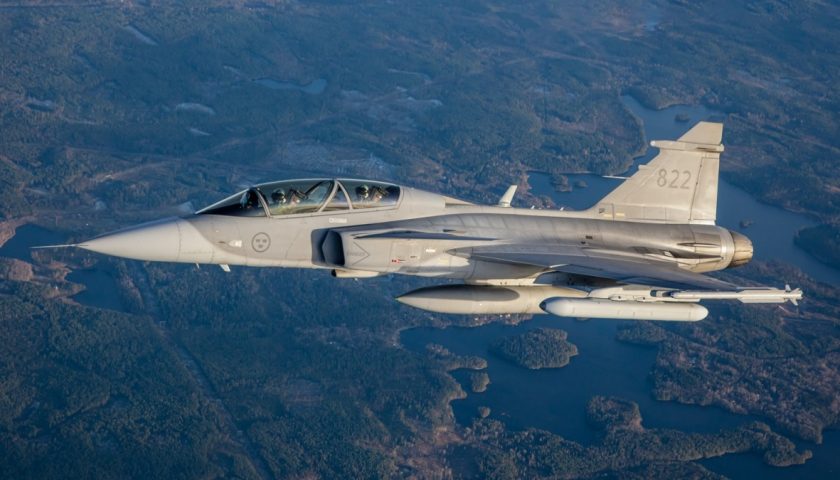Are we witnessing a late, but welcome, awareness of the need for electronic warfare and air defense suppression capabilities in Europe? Regardless, in one week, three major announcements were made in Europe concerning the development of aircraft-mounted electronic warfare technologies.
The first announcement is of German origin. Airbus DS has indeed proposed an electronic warfare version of its Typhoon, identified as Typhoon ECR, a device specialized in electronic warfare missions and suppression of enemy anti-aircraft defenses, or SEADMore. Intended to replace the few 28 Tornado ECR in service with the Luftwaffe, it is part of the European manufacturer's bid to win the German call for tenders for the replacement of its Tornado fleet, and on which the European aircraft is opposed to the Boeing F/A18 E/F Super Hornet, and its electronic warfare version, theEA18G Growler. The new aircraft will be designed by Airbus DS, which will lead a consortium formed by Hensoldt, MBDA, MTU, Premium Aerotec, and Rolls-Royce.
At the same time, last week Saab presented its Electronic Attack Jammer Pod, or EAJP, a jamming pod intended to equip the fighter JAS 39 E/F Gripen, and whose characteristics would allow it not only to ensure the self-protection of the device, but to extend this protection to neighboring aircraft, allowing the Gripen to also transform into an electronic warfare device, particularly in its two-seater version F.

But the biggest surprise comes froma project launched jointly by France, Italy and Spain within the framework of PESCO, the European permanent structured cooperation program, intended to design an airborne electronic attack system (Airborne electronic attack system or EAE in English), to equip the aircraft of the armed forces of the 3 countries, as well as those of other European forces. Germany and Sweden are also stakeholders in the program. A contract is expected for 2020, and it is the Spanish Indra, also designated by Spain as referent at the level of the FCAS program, which will lead the program, with the Italian Electronicca, the German Hensoldt, the French Thales and the Swedish Saab. This program goes beyond the ambitions of the two previous initiatives, since it involves developing not only a tool, but a base of know-how and technological cooperation on a European scale, for all aspects of electronic warfare, including the dimensions Cyber. We also see that it brings together countries belonging to the program FCAS as well as the program Tempest, and can therefore, ideally, constitute a collaborative basis for bringing together the two European programs.
We also note that Germany, and in particular the defense electronics specialist Hensoldt, participates in two of these 3 programs, suggesting that Berlin has little intention ofabandon the Typhoon for the benefit of the F18 Super Hornet to replace its Tornado. Whatever the case, we can only be satisfied to see that, finally, the Europeans seem seriously consider these issues of electronic warfare. The fact remains that beyond the purely technological design of the equipment, it will take many years before we can align truly effective equipment, the time, in particular, to record and analyze theset of signals which this equipment may be confronted with. As is often said, it only takes a few years for an army to lose an operational capability, while it often takes over a decade to acquire it, or acquire it again….
